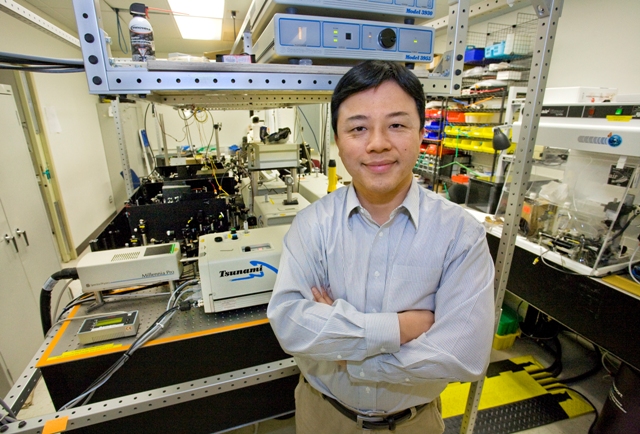Möbius symmetry, the topological structure that gives rise to a semi-curved strip with two surfaces but only one side, has been a source of wonder since its discovery in 1858 by the German mathematician August Möbius. For many years scientists have been trying to find an example of Möbius symmetry in natural materials, without any success.

Now, a team of scientists has managed to find a Möbius symmetry (Möbius, The term on Wikipedia) in metamaterials, The term on Wikipedia) - substances synthesized from artificial "atoms" and "molecules" that exhibit electromagnetic properties arising from their structure and not from their chemical composition.
Xiang Zhang, a scientist at the Lawrence Berkeley National Laboratory in the US Department of Energy, and a professor at the University of California (Berkeley), led a study in which electromagnetic Mobius symmetry was successfully introduced into supramolecular systems of composite materials made of metals and non-conducting parts. This discovery opens the door to finding and exploiting a new material phenomenon.
"We experimentally observed an innovative topological symmetry in electromagnetic systems of supermaterials that is equivalent to the structural symmetry of a Mobius strip, where the number of twists is controlled by changes in the sign of the electromagnetic coupling between the superatoms," explains the researcher. "In addition, we demonstrated that materials with different coupling signs exhibit resonance frequencies that depend on the number of windings, but not on their location. This finding verifies the topological nature of the symmetry."
By using resonating metallic atoms, organized as a conjugate split-ring resonator, the researchers were able to assemble these trimers from three identical superatoms. Through precise design of the electromagnetic couplings between the three superatoms, these trimers exhibited Mobius symmetry (symbolized as C3) - that is, Mobius-type circular symmetry through three rotations of 120 degrees. The Möbius twists result from a change in the signs of the electromagnetic coupling constants between the superatoms that make up the trimer.
"The topological Möbius symmetry that we found in our supramolecular trimers is a new symmetry that does not appear in natural substances or molecules," notes the researcher. "Since the coupling constants of supermolecules can be changed arbitrarily from a positive value to a negative value without any limitations, the number of Möbius twists we are able to produce is unlimited. This means that structures that existed until today in the mathematical world only, can be obtained in a real way through different designs of supermolecules."
The research findings were published in the scientific journal Physical Review Letters.

9 תגובות
http://en.wikipedia.org/wiki/Möbius_strip
Trimer: Trimer
http://en.wikipedia.org/wiki/Trimer_(chemistry)
As usual, a fascinating and challenging report.
I asked this time: trimmers? What is?
General recommendation: Is there a limitation of only textual reporting? Many times an illustration (appearing in the original report or in other sources, including in the CC license) will direct the report to more readers.
Eric,
As far as I understand, there are currently no consequences of the discovery for everyday life, it is a kind of mathematical curiosity.
Can someone explain to laymen like me the revolutionary consequences of the discovery in my everyday life..?
Mr. Nachmani, I have already come across your articles with unfamiliar concepts (and I really read almost every innovation you bring to the site) but this is already excessive. Maybe it's just my personal ignorance of chemistry, but it seems to me that this article is written with too many concepts that the average reader of this site does not know about Borim.
If it is not possible to simplify what is written a little for the sake of the "masses", perhaps it is better to give up the report.
http://www.youtube.com/watch?v=4bcm-kPIuHE
http://www.youtube.com/watch?v=3iMI_uOM_fY
http://en.wikipedia.org/wiki/File:M%C3%B6bius_strip.jpg
Sounds fascinating, but I couldn't understand from the article what exactly was discovered. Better to simplify to layman's terms next time.